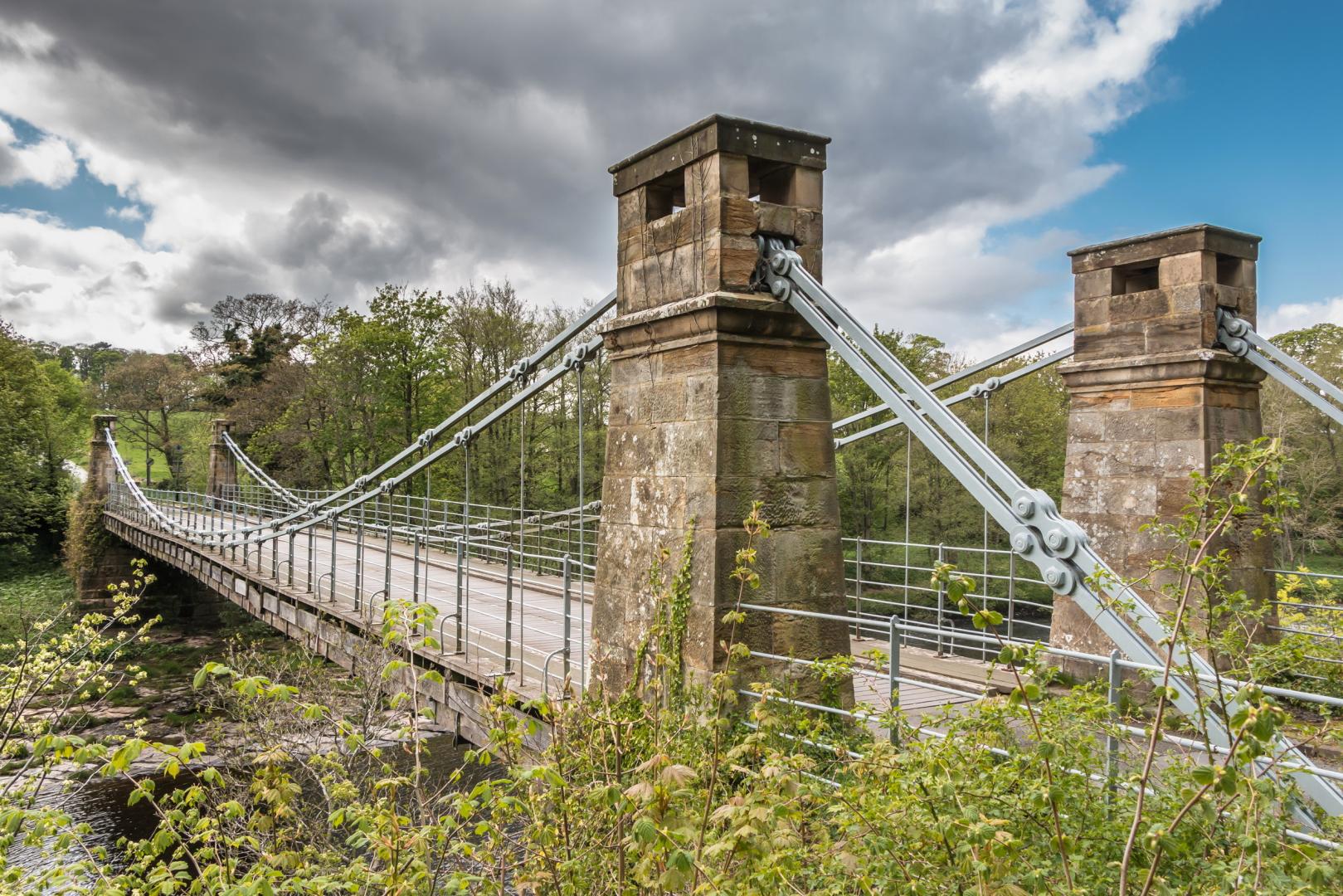FIVE years ago Whorlton Bridge was closed to vehicles. A report of damage to the structure led to an inspection by Durham County Council engineers who deemed it unsafe. In December 2020 it was closed to pedestrians, such was the danger it posed to users.
The little suspension bridge built as part of the Staindrop to Greta Bridge turnpike was designed for horse and cart transport of coal from Durham.
A single span chain suspension bridge, it opened in July 1831. In 1914 a three ton weight limit was placed on the bridge and which has remained in place.
In December 1942, Prime Minister Winston Churchill stood on Whorlton Bridge to watch soldiers train in the meadows on the south bank before wading through the River Tees and then tackling steep cliffs.
Now it is one of the UK’s oldest road suspension bridges; Grade 2* listed and a scheduled monument. It is also one of the UK’s earliest surviving examples of an iron chained suspension bridge with twin battered masonry pylons at each end.
So, given its age and uniqueness, it was unthinkable not to repair it. But at what cost?
Carrying out assessments on the extent of what work would be needed was tricky and not helped by the suspected presence of bats. At every stage, permissions were required from the Environment Agency, Historic England and the Secretary of State for Digital, Culture, Media and Sport for Scheduled Monument Consent (SMC).
Durham County Council is spending £8.4m to repair the bridge. This is something they could not have afforded to do without the help of an unspecified amount from the government’s £20m levelling up fund – shared with Locomotion and Toft Hill Bypass projects.
Substantive progress is being made. The Bat Mitigation Licence has been granted by Natural England so work can begin on the north side of the bridge. Ground anchors and foundations for the cable crane platform on the south side are in place and work will start soon on the north.
When complete, a working platform suspended from cables will provide access to the bridge from above.
The careful process of entirely dismantling the bridge, with subsequent inspection, testing and painting of each of the 1,800 or so pieces, begins in August and will likely continue to November.
Then the plan is to install new bridge anchorage foundations ready for the bridge to be re-erected between December and April, 2025.
If all goes well, the engineers will be packing up their tools a month later.
And a bridge from the past to the future will be once again open for passing custom.
l Follow progress of the bridge repair works at durham.gov.uk





